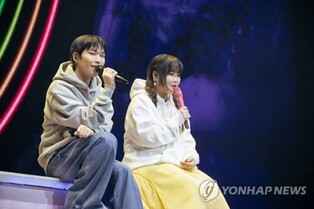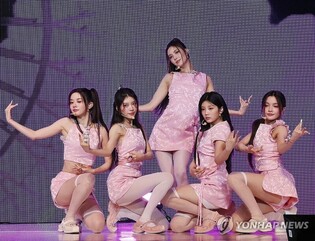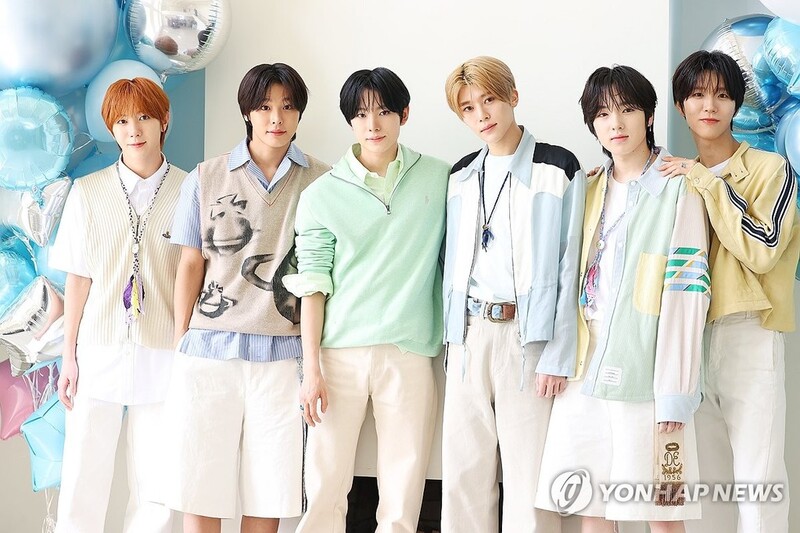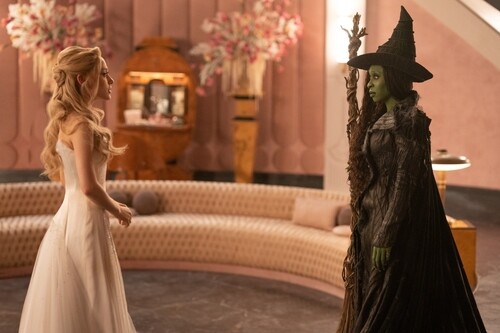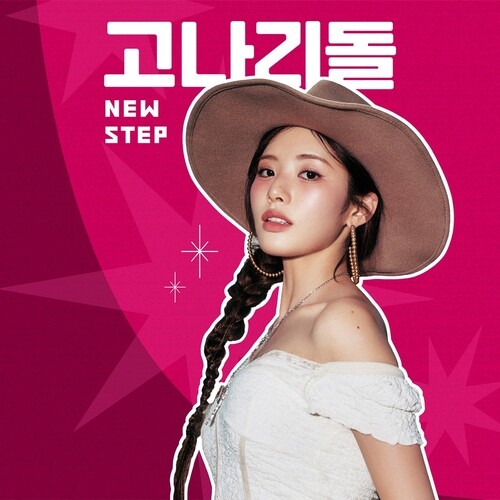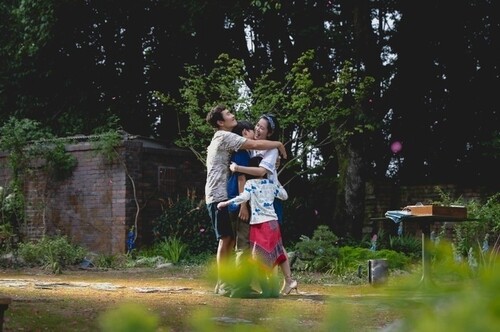*Editor’s note: K-VIBE invites experts from various K-culture sectors to share their extraordinary discovery about the Korean culture.
[Larger Than Architecture] Chapter 1. This World We Live In
Ep. 2. Reflections on Lunar New Year
By Kim Won (Master K-architect)
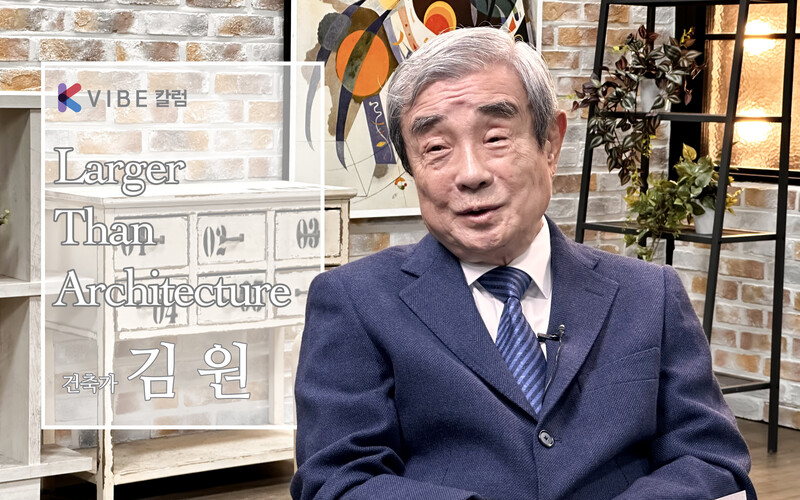 |
On Lunar New Year afternoon, I find myself reminiscing about various things. Ever since I was young, my family has celebrated birthdays and memorial days according to the solar calendar, so I naturally grew up thinking the New Year was celebrated on January 1st. After getting married, I found that my wife's family had the same custom, so we've continued to celebrate the New Year in the same way without any cultural clashes.
There was a time when the solar New Year was avoided and even called the "Japanese New Year," but perhaps because we lived in Busan, we didn't have any particular aversion to it. Historically, Busan had been a hub of exchange between Korea and Japan, with a Japanese settlement called Waegwan established there. Consequently, elements of Japanese culture were integrated into our daily lives.
Growing up in Busan, we saw many Japanese-style houses with small front yards, wore Japanese-style clothing like "monpe," and enjoyed sweet and savory Japanese foods. As teenagers, we even watched Japanese TV broadcasts, which were stronger and more colorful than our own. Watching the year-end "Kohaku Uta Gassen" (Red and White Song Battle) became a popular tradition.
My mother, who had studied in Japan, incorporated modern nutritional knowledge she learned there into our family meals. She constantly emphasized the importance of chlorophyll and vitamins, urging us to chew our food thoroughly and eat slowly. We were encouraged to eat fresh green vegetables and fruits with their skins on, and consume plenty of seaweed. These lectures became a staple of our mealtime conversations.
Root vegetables like burdock and lotus root were frequently on our table, often prepared in a sweet and sour Japanese style or seasoned with soy sauce. Living in Busan, we naturally had an abundance of seafood, which formed the basis of our diet. Seaweed and fish were daily staples, with varieties like nori, sea mustard, kelp, hijiki, and green laver frequently featured in soups and side dishes.
We ate fish more often than meat, and my favorite was a type known colloquially as "Kintaro" (金太郞), or red fish. Whenever I came home during school breaks, my mother would prepare this fish first, either grilling it with coarse salt or cooking it spicy with radish. The sweet taste of Kintaro was a delicious reminder that I was back home.
Another fish that stands out in my memory is cod. During winter, it was customary to stock up on cod, much like preparing kimchi for the winter. Nowadays, cod seems less common, possibly due to overfishing or changing habits, but back then, it was essential. We would buy about twenty codfish for our family, clean them, and hang them on the porch to dry, ensuring a steady supply of protein throughout the winter.
Cod was versatile, with every part used. The fresh fillets were often cooked in a light soup with radish, and the head was reserved for the family head's bowl, a tradition that remained even after my father passed away, with my older brother taking on that role. We particularly loved the cod roe, while the soft and milky cod milt was reserved for the adults.
We also made various types of cod roe pickles, including fermented gills and intestines. These were traditional delicacies that enriched our winter diet, showcasing the resourcefulness and culinary heritage of our family.
On Lunar New Year afternoon, as I ponder various memories, I recall how our family always celebrated birthdays and memorial days according to the solar calendar. Consequently, I grew up believing the New Year was celebrated on January 1st. After marriage, I found my wife's family had similar customs, so we continued to observe the solar New Year without any cultural clashes.
There was a time when the solar New Year was avoided, labeled as the "Japanese New Year," but perhaps because we lived in Busan, we had no such aversion. Historically, Busan had been a hub for Japanese-Korean interactions, with the Waegwan settlement facilitating cultural exchanges. This influence permeated our daily lives, from the Japanese-style houses with small front yards to the Japanese-style clothing like "monpe," and the sweet-savory foods we enjoyed.
During my teenage years, we watched Japanese TV broadcasts, which were stronger and more colorful than local programs. Watching the year-end "Kohaku Uta Gassen" (Red and White Song Battle) became a beloved tradition. My mother, who studied in Japan, integrated modern nutritional principles into our meals. She emphasized the importance of chlorophyll, vitamins, chewing thoroughly, and eating slowly. Fresh green vegetables, fruits with their skins, and seaweed were staples, and these health lectures became a part of our mealtime routine.
Root vegetables like burdock and lotus root were commonly served, often prepared in a sweet-sour Japanese style or seasoned with soy sauce. Living in Busan meant we had an abundance of seafood. Seaweed and fish were daily staples, with varieties like nori, sea mustard, kelp, hijiki, and green laver frequently featured in soups and side dishes.
We ate more fish than meat, with my favorite being "Kintaro" (金太郞), a red fish. Whenever I returned home for breaks, my mother would prepare this fish, grilling it with coarse salt or cooking it spicy with radish. The sweet taste of Kintaro was a delicious reminder of home.
Cod was another significant memory. During winter, it was customary to stock up on cod, much like preparing kimchi for winter. Nowadays, cod seems less common, but back then, it was essential. We would buy about twenty codfish, clean them, and hang them on the porch to dry, ensuring a steady supply of protein throughout the winter.
Cod was versatile, with every part used. The fresh fillets were often cooked in a light soup with radish, and the head was reserved for the family head's bowl. We particularly loved the cod roe, while the soft and milky cod milt was reserved for the adults. We made various types of cod roe pickles, including fermented gills and intestines, enriching our winter diet.
One of my most vivid memories from those times is crossing the main hall to reach the toilet at night, passing under the hanging codfish. Their opened bellies emitted a bluish glow, resembling eerie will-o'-the-wisps. The cold touch of the hanging fish tails against my forehead reminded me of the chilling corpses described in the detective novels I secretly read, like "Arsène Lupin" and "The Murders in the Rue Morgue."
Reflecting on food and traditions, I realize that holidays are mostly about food, new clothes, and receiving pocket money. However, our home is particularly quiet this Lunar New Year. We already celebrated during the solar New Year with our office colleagues, current and former employees, and students, leaving no one to visit today. My wife's family also observes the solar New Year, and my siblings have gone to their in-laws. Our daughter visited yesterday and is at her in-laws today, while our only son has been in India for six months, seeking joy.
A call from my son on this special day was a precious moment, but we spent most of the time discussing the package he received, leaving little time for heartfelt conversations. I had sent him various Korean foods and medications worth 400,000 won, which likely surprised his Indian friends.
Feeling the pang of unshared thoughts, I went upstairs to my son's room, which had been empty for so long, and wrote this on his computer. The room, though unfamiliar now, still holds the youthful energy and dreams, bringing me a sense of warmth.
Despite having only my wife and me to celebrate holidays, God blessed us by bringing our daughter, son-in-law, and granddaughter back from abroad after five years. Their presence has filled our home with laughter and joy, especially the little 28-month-old girl who seems like an angel sent to bring us happiness.
Every time I come home, I think about what would make this child happy, feeling a sense of infatuation. Last night, her joyous shout of "Grandpa!" as she ran to embrace me touched me deeply. Spending those few hours together, I wanted to do everything to make her happy. Today, however, the house feels quiet, and the echoes of last night's laughter linger in my ears, making me look forward to seeing her tomorrow.
At church today, the priest asked the nuns and district leaders to set up an offering table with fruit and rice cakes for the Lunar New Year. There were no bowls or chopsticks, and no ancestral tablets, avoiding the notion of worshiping idols. Yet, someone had called the priest last night to complain, prompting him to explain the significance of the offering table in his sermon. This incident reminded me that sometimes, trying to innovate or follow traditions differently can lead to unnecessary complications.
Heungseon Daewongun once issued a terrifying decree to eliminate Catholics across the country, accusing them of being unrighteous for neglecting ancestral rites. Yet today, we witness a churchgoer calling a priest to complain about holding a Mass for deceased ancestors, leaving me speechless about the ironies of history.
After the Mass ended, parishioners exchanged New Year’s greetings, truly making it feel like Lunar New Year. We returned home quietly, reflecting on how traditional greetings and celebratory gestures have evolved over time. Formal New Year greetings and official events typically occur during the solar New Year, influenced perhaps by Christmas cards and institutional practices. However, heartfelt congratulations, gift exchanges, and personal celebrations seem more aligned with the Lunar New Year, gradually resolving the longstanding dual-calendar issue.
I’ve grown accustomed to this duality. The two calendars, one based on the sun's movements and the other on the moon's, are both impeccable in their adherence to natural laws. What continually amazes me is the lunar calendar's precise prediction of seasonal changes.
For instance, traditional markers like "Usu" (Rain Water) and "Gyeongchip" (Awakening of Insects) often correspond exactly with the expected weather patterns. When the lunar calendar predicts the severity of the "Sohan" (Minor Cold) period, it almost always proves accurate. Similarly, the solar calendar accurately marks the winter solstice (Dongji) and summer solstice (Haji), with the winter solstice signifying the shortest day of the year. This paradoxically marks the beginning of longer days leading up to the equinox, where day and night are equal, offering a poetic notion that even the peak of winter signifies the onset of spring.
As people show greater interest in traditional culture, fascination with the lunar calendar, which tracks the movements of the moon, has grown. This raises the question: which exerts a more direct influence on us, the sun or the moon? Physically, the sun feels closer and has a more immediate impact, while psychologically, the moon's monthly cycle creates a sense of proximity. Thus, the sun influences our physical existence, marking the passage of years, while the moon, with its monthly phases, feels more intimately connected to our emotions.
When considering a single day, both the sun and the moon are integral. The sun's presence during the day stimulates rational thought, whereas the moonlight at night nurtures our emotions. Neither can be said to be closer than the other; they both shape our daily lives equally. This dual influence explains why an accurate fortune telling based on the four pillars of destiny (year, month, day, hour) requires precise knowledge of all these temporal elements.
For instance, turning a year older according to the lunar New Year means that today, I turn 63 years old (international age) and 64 years old in Korean age, starting the Year of the Dog. This transition brings a fresh perspective. During Christmas, Cardinal Kim gave a homily in our Sejong-ro parish, reflecting on the virtues of the dog. Born in the Year of the Dog himself (1922), he urged us to emulate the dog’s loyalty and truthfulness in the coming year. Dogs are renowned for their unwavering loyalty and do not betray their owners, regardless of how they are treated. This unconditional loyalty starkly contrasts with the often calculative nature of humans.
Take our dog, Jongjong (officially named Kim Jindo), for example. This Jindo dog, living with us for two generations, believes he is the household's chief protector. Despite being confined to a small area and tethered in all weather conditions, Jongjong is constantly vigilant, never letting anyone pass by unnoticed. He diligently guards the house, reacting especially to those carrying objects, such as the laundry lady or the cleaner, whom he perceives as potential threats.
"Master, someone is taking something from your house!" he seems to shout, making a tremendous fuss. Yet, despite his dedication, I, as his master, a so-called architect, have never built him a proper house. My interaction with him is limited to a few pats on the head every month or so. Nevertheless, Jongjong knows the hierarchy within our household. Even though the housekeeper feeds him, he recognizes that I hold the highest rank in the home.
We have another dog named "Aengdu," a five-year-old unmarried Sapsaree. Unlike our Jindo dog, Jongjong, Aengdu exhibits several contrasting traits. Both dogs represent Korea's native breeds, but beyond that, their similarities end. Jongjong, a male, has ears that stand erect like needlepoints, while Aengdu, a female, has floppy ears. Aengdu's personality is distinctively feminine; she wags her tail at everyone, earning the nickname "Gisaeng" (a traditional Korean female entertainer) in our household.
The Sapsaree is a symbol in traditional Korean literature and folklore, embodying quintessential Korean characteristics. To elaborate, if Jongjong represents the discipline and concentrated energy of Taekwondo, Aengdu embodies the flexibility and resilient strength of Taekkyon. She never displays her strength carelessly but, when provoked, reveals immense power. In the four years I've lived with Aengdu, I've only witnessed her display this strength a few times.
Despite her downcast eyes, veiled by her overhanging fur, Aengdu sees perfectly well. There's no need to trim her fur; her eyes, often appearing sorrowful, see everything clearly. The history of the Sapsaree is marred by tragedy. During the Japanese colonial period, while promoting the Akita dog, the Japanese tried to exterminate the Sapsaree, killing nearly 300,000 of them. It was only recently that the Sapsaree's original form was restored by a team of veterinary professors at Kyungpook National University. This dark history adds to the Sapsaree’s aura of melancholy.
I sit in the warm afternoon sun in our yard. As I release Jongjong from his leash, he bounds around energetically. Aengdu, who usually roams freely without a leash, joins in the frolicking. Their behaviors are dictated by their natures. Jongjong is leashed because he tends to bark and snap at anyone, while Aengdu remains unrestrained because she conceals her temperament, acting docile.
I find it both pitiful and admirable that these two dogs, without proper shelters, endure the cold winter nights in the middle of the yard. This resilience seems fitting for their nature. Traditionally, our dogs would find shelter under the wooden porch or other cozy spots they discovered themselves.
Now, my remaining concern is arranging for these two "bachelors" and "spinsters" to find mates. However, Jongjong and Aengdu must not fall in love with each other; their union is forbidden. They must remain just good friends, allowing me to ease my vigilance.
The cornelian cherry tree is already preparing to bloom, its buds ready to burst. Similarly, the lilacs, forsythias, and magnolias are poised, their buds like pointed brush tips. They are ready to brave the remaining cold snaps and welcome the arrival of spring—the season of radiant sorrow.
(C) Yonhap News Agency. All Rights Reserved







